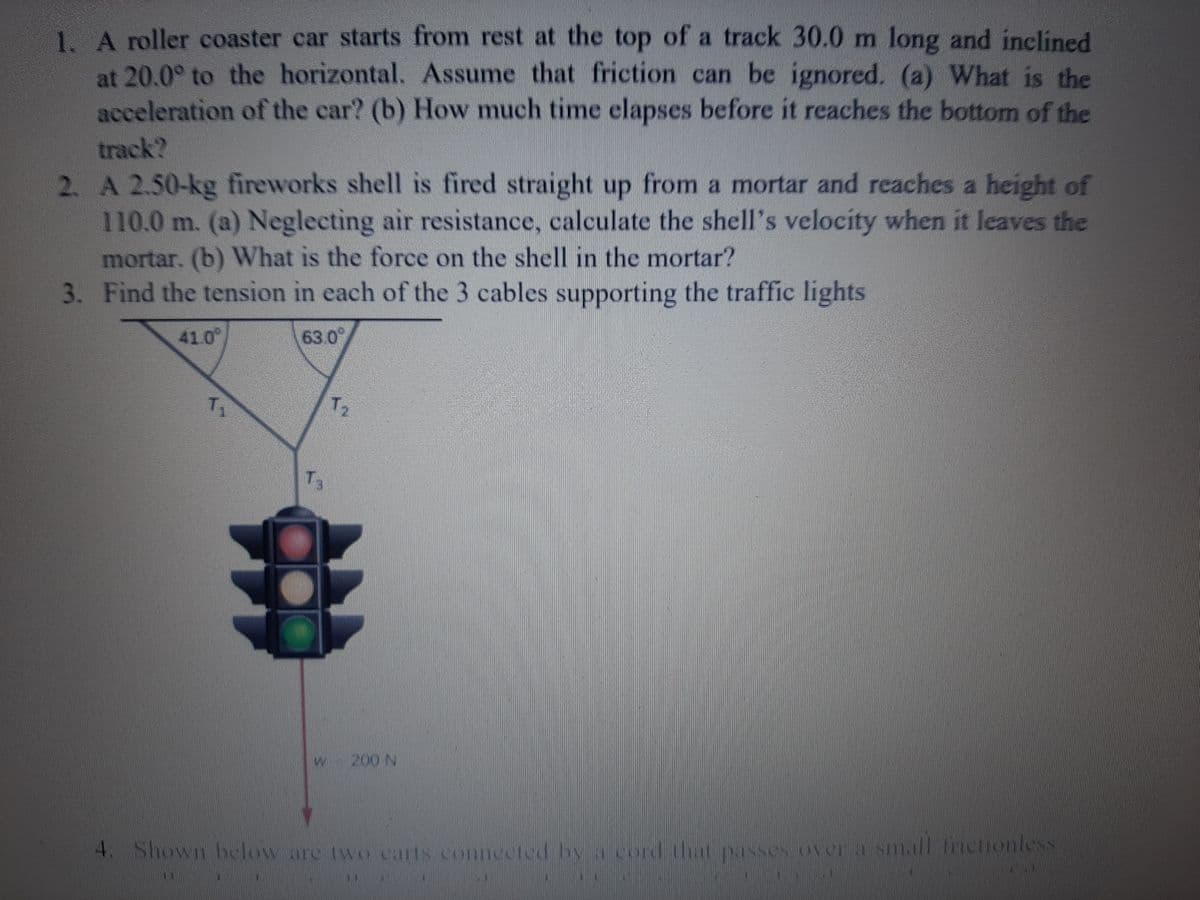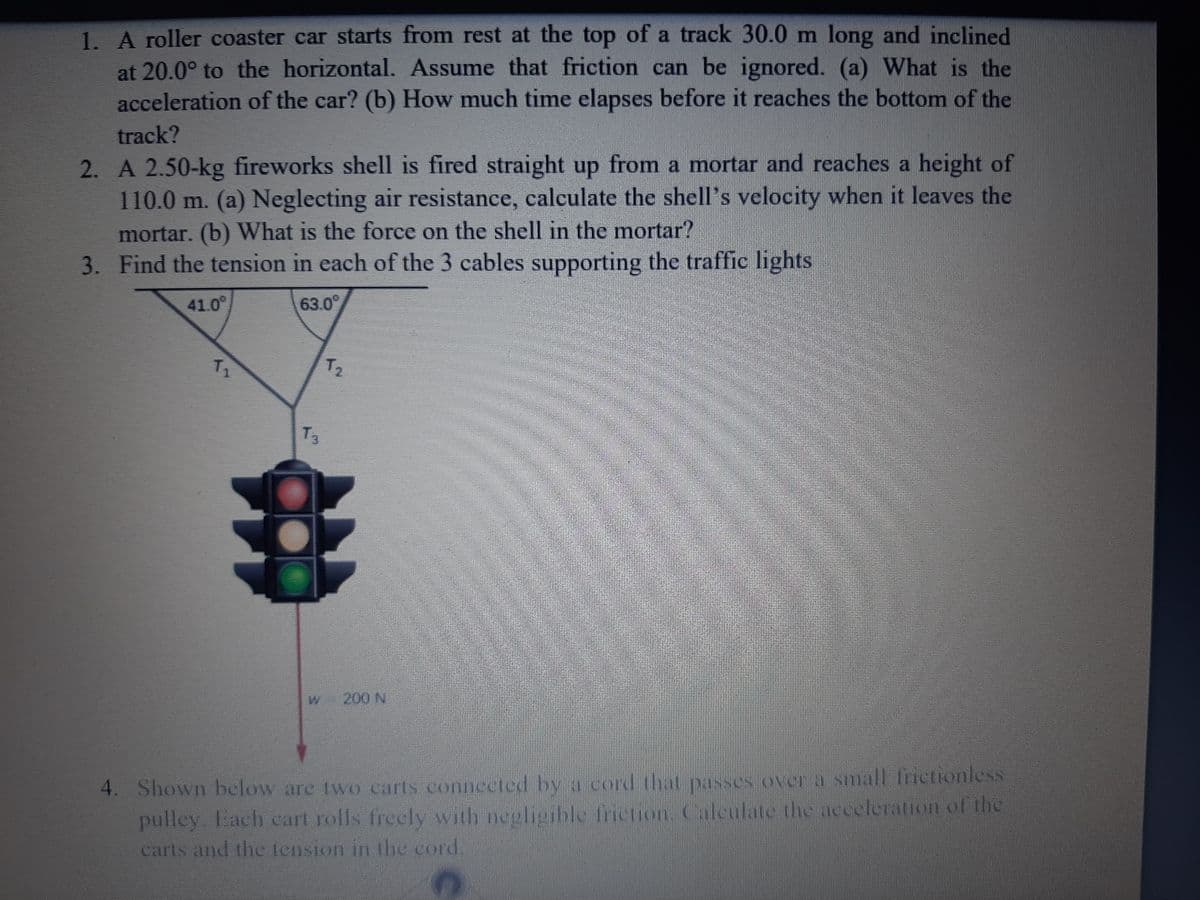1. A roller coaster car starts from rest at the top of a track 30.0 m long and inclined at 20.0° to the horizontal. Assume that friction can be ignored. (a) What is the acceleration of the car? (b) How much time elapses before it reaches the bottom of the track?
1. A roller coaster car starts from rest at the top of a track 30.0 m long and inclined at 20.0° to the horizontal. Assume that friction can be ignored. (a) What is the acceleration of the car? (b) How much time elapses before it reaches the bottom of the track?
Physics for Scientists and Engineers, Technology Update (No access codes included)
9th Edition
ISBN:9781305116399
Author:Raymond A. Serway, John W. Jewett
Publisher:Raymond A. Serway, John W. Jewett
Chapter5: The Laws Of Motion
Section: Chapter Questions
Problem 5.42P: Two objects are connected by a light string that passes over a friction less pulley as shown in...
Related questions
Topic Video
Question

Transcribed Image Text:1. A roller coaster car starts from rest at the top of a track 30.0 m long and inclined
at 20.0° to the horizontal. Assume that friction can be ignored. (a) What is the
acceleration of the car? (b) How much time elapses before it reaches the bottom of the
track?
2. A 2.50-kg fireworks shell is fired straight up from a mortar and reaches a height of
110.0 m. (a) Neglecting air resistance, calculate the shell's velocity when it leaves the
mortar. (b) What is the force on the shell in the mortar?
3. Find the tension in each of the 3 cables supporting the traffic lights
41.0
63.0
T1
T2
200 N
4. Shown below are two carts conected
d by cord that passes over a smal inctionless

Transcribed Image Text:1. A roller coaster car starts from rest at the top of a track 30.0 m long and inclined
at 20.0° to the horizontal. Assume that friction can be ignored. (a) What is the
acceleration of the car? (b) How much time elapses before it reaches the bottom of the
track?
2. A 2.50-kg fireworks shell is fired straight up from a mortar and reaches a height of
110.0 m. (a) Neglecting air resistance, calculate the shell's velocity when it leaves the
mortar. (b) What is the force on the shell in the mortar?
3. Find the tension in each of the 3 cables supporting the traffic lights
41.0
63.0
T2
200 N
4. Shown below are two carts connected by a cord that passes over a small frietionless
pulley. Each cart rolls freely with negligible friction. Calculate the acceleration of the
carts and the tension in the cord.
Expert Solution
This question has been solved!
Explore an expertly crafted, step-by-step solution for a thorough understanding of key concepts.
This is a popular solution!
Trending now
This is a popular solution!
Step by step
Solved in 3 steps with 1 images

Knowledge Booster
Learn more about
Need a deep-dive on the concept behind this application? Look no further. Learn more about this topic, physics and related others by exploring similar questions and additional content below.Recommended textbooks for you

Physics for Scientists and Engineers, Technology …
Physics
ISBN:
9781305116399
Author:
Raymond A. Serway, John W. Jewett
Publisher:
Cengage Learning

Physics for Scientists and Engineers, Technology …
Physics
ISBN:
9781305116399
Author:
Raymond A. Serway, John W. Jewett
Publisher:
Cengage Learning